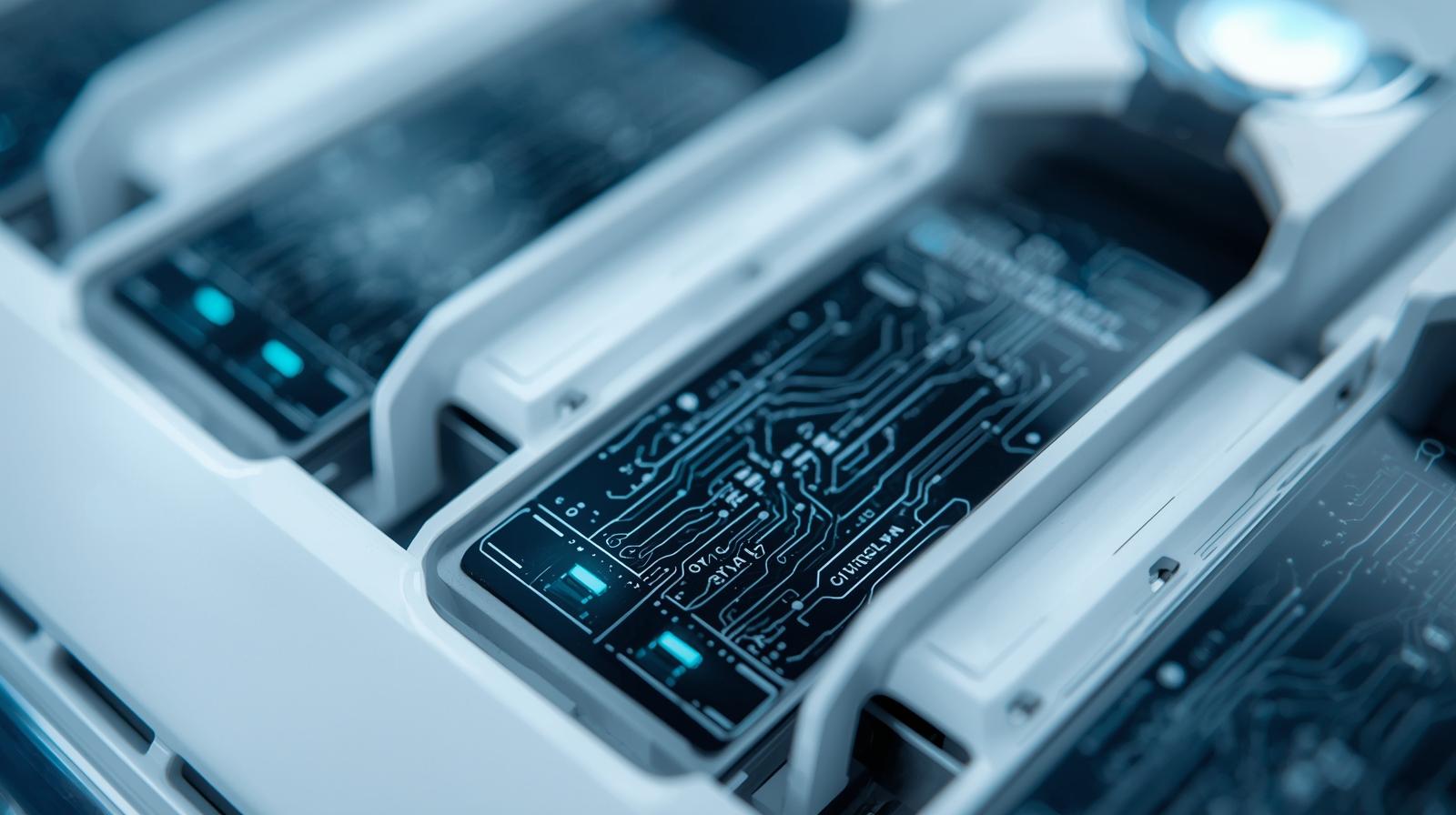Printed electronics is reshaping the future of healthcare by enabling lightweight, flexible, and cost-effective solutions for patient care. Unlike traditional rigid electronics, printed circuits use conductive inks and thin-film technologies to create medical devices that are adaptable, wearable, and even disposable. These innovations are ushering in a new era of personalized medicine, remote monitoring, and real-time diagnostics.
In healthcare, printed electronics technology is particularly valuable because it addresses critical needs: patient comfort, affordability, and accessibility. From wearable biosensors to implantable devices, the applications are growing rapidly. With the rise of digital health, printed electronics are no longer a futuristic concept—they’re here, transforming how care is delivered across the globe.

Market Growth and Industry Overview
The global printed electronics in healthcare market has seen strong momentum due to advancements in flexible substrates, conductive inks, and integration with IoT devices. The global Printed Electronics Market size was estimated at USD 17.09 billion in 2024 and is predicted to increase from USD 19.46 billion in 2025 to approximately USD 39.85 billion in 2030, expanding at a CAGR of 15.4% from 2025 to 2030.
Several factors are fueling this growth:
-
Rising demand for remote patient monitoring systems.
-
Expansion of point-of-care testing and diagnostics.
-
Increased adoption of wearable health technology.
-
Advancements in personalized medicine and telehealth.
The industry also benefits from partnerships between material suppliers, medical device manufacturers, and healthcare providers. For example, companies like FlexEnable and Xerox PARC are driving innovation by developing flexible displays and biosensors tailored for medical use.
Download PDF Brochure @ https://www.marketsandmarkets.com/pdfdownloadNew.asp?id=197
Advantages of Printed Electronics in Medical Devices
Flexibility and Miniaturization
Traditional electronics are bulky and rigid, making them unsuitable for patient-friendly healthcare devices. Printed electronics, on the other hand, can be manufactured on flexible substrates like plastic, paper, or even fabric. This miniaturization enables the creation of lightweight patches, implants, and wearables that improve patient comfort.
Cost-Effectiveness
Printed electronics use additive manufacturing processes, which reduce material waste and overall production costs. This affordability makes it possible to design disposable diagnostic tools such as biosensors for glucose monitoring or rapid testing kits.
Scalability in Mass Production
Printed electronics technologies, including screen printing and inkjet printing, allow large-scale, low-cost manufacturing. This scalability is essential for producing high volumes of medical sensors and wearable devices that meet growing global healthcare demands.
Applications of Printed Electronics in Healthcare
1. Smart Wearables for Health Monitoring
Wearable devices powered by printed electronics can monitor heart rate, body temperature, oxygen saturation, and blood pressure in real time. These smart wearables are lightweight, flexible, and unobtrusive, making them ideal for continuous health monitoring.
2. Implantable Medical Devices
Flexible printed circuits are being used in pacemakers, neural stimulators, and drug delivery implants. Their adaptability ensures biocompatibility while reducing the risk of rejection.
3. Point-of-Care Diagnostics
Printed biosensors allow rapid testing at the patient’s bedside or in remote locations. For example, COVID-19 testing kits and glucose strips rely on printed sensors for accurate and affordable diagnostics.
4. Smart Patches and Skin Sensors
Smart patches equipped with printed circuits can detect hydration levels, sweat biomarkers, and electrolyte balance, making them useful for athletes, patients with chronic conditions, and elderly care.
5. Printed Biosensors for Chronic Disease Management
Conditions like diabetes, cardiovascular disease, and cancer require long-term monitoring. Printed biosensors make it easier to track biomarkers non-invasively, providing continuous data to healthcare providers.
6. Drug Delivery Systems
Printed electronics enable controlled drug release through transdermal patches or implantable devices, ensuring precision dosing and minimizing side effects.
7. Remote Patient Monitoring
With IoT integration, printed electronics support remote health tracking, reducing hospital visits and enabling proactive care management.
8. Prosthetics and Rehabilitation Devices
Flexible printed sensors embedded in prosthetics allow motion tracking, pressure sensing, and biofeedback, significantly enhancing rehabilitation therapies.
9. Printed RFID and NFC Tags for Medical Logistics
Hospitals use RFID and NFC tags to track medical supplies, equipment, and patient data. Printed versions are cost-effective and disposable, improving supply chain efficiency.
10. Smart Bandages for Wound Healing
Smart bandages embedded with printed sensors can monitor wound healing progress, infection risks, and moisture levels, providing doctors with real-time insights.

Key Materials and Technologies Used
Conductive Inks
Silver nanoparticle inks, carbon-based inks, and conductive polymers are widely used in printed medical electronics. These inks enable reliable electrical conductivity while being biocompatible.
Flexible Substrates
Plastics, textiles, and biodegradable materials serve as substrates for printed circuits. Their flexibility makes them suitable for wearable and implantable devices.
Hybrid Electronics Integration
Combining printed electronics with traditional silicon-based chips creates hybrid solutions that balance performance with cost-efficiency.
Challenges in Adoption
Regulatory Hurdles
Medical devices undergo rigorous regulatory approval. Printed electronics, being relatively new, face additional scrutiny to ensure safety and efficacy.
Reliability and Durability Issues
Since healthcare applications demand high accuracy and durability, ensuring that printed electronics can withstand long-term use is a major challenge.
Integration with Legacy Systems
Hospitals and clinics often rely on legacy IT infrastructure. Integrating new printed electronic devices with existing systems can be complex.
Future Trends and Innovations
AI-Powered Printed Electronics
Artificial intelligence will enhance data analysis from printed biosensors, enabling predictive healthcare models.
Personalized Medicine Applications
Printed electronics will make personalized drug dosing, wearable diagnostics, and patient-specific implants more affordable and accessible.
Energy Harvesting Devices
Self-powered medical devices using printed solar cells and energy harvesters will reduce dependence on batteries, making wearables more sustainable.
Printed electronics in healthcare and medical devices are transforming the industry with innovations that make diagnostics more accessible, treatments more personalized, and patient care more efficient. From smart wearables to smart bandages, the potential is vast.
As technology advances and adoption grows, the integration of printed electronics with IoT, AI, and personalized medicine will define the future of healthcare. With their scalability, affordability, and versatility, printed electronics are not just an innovation—they’re a revolution.
Explore In-Depth Semiconductor & Electronics Market Research:
https://www.marketsandmarkets.com/semiconductorand-electonics-market-research-87.html
FAQs
1. What are printed electronics in healthcare?
Printed electronics involve using conductive inks and flexible substrates to create lightweight, cost-effective medical devices such as sensors, wearables, and smart patches.
2. How do printed electronics improve patient care?
They provide real-time health monitoring, remote diagnostics, and personalized treatments, leading to faster interventions and better outcomes.
3. Are printed electronics safe for medical use?
Yes, when designed with biocompatible materials and tested under regulatory standards, printed electronics are safe for use in medical devices.
4. Can printed electronics reduce healthcare costs?
Absolutely. Their low manufacturing costs and disposability make them ideal for large-scale adoption in diagnostic tools and wearables.
5. What are the most common applications?
Smart wearables, biosensors, diagnostic strips, drug delivery patches, and implantable devices are the most widely used applications.
6. What does the future hold for printed electronics in healthcare?
The future includes AI-powered diagnostics, energy-harvesting wearables, and personalized medicine devices, expanding accessibility worldwide.
See The Latest Semiconductor Reports:
Solid State Relay Market Size, Share & Trends : https://www.marketsandmarkets.com/Market-Reports/solid-state-relay-market-260413598.html
Battery Technology Market Size, Share & Trends : https://www.marketsandmarkets.com/Market-Reports/battery-technology-market-253343109.html
Radiation Hardened Electronics Market Size, Share & Trends : https://www.marketsandmarkets.com/Market-Reports/radiation-hardened-electronics-market-44047967.html
Smart Appliances Market Size, Share & Trends : https://www.marketsandmarkets.com/Market-Reports/smart-appliances-market-8228252.html
Quantum Computing Market Size, Share & Trends : https://www.marketsandmarkets.com/Market-Reports/quantum-computing-market-144888301.html
Cold Chain Monitoring Market Size, Share & Trends : https://www.marketsandmarkets.com/Market-Reports/cold-chain-monitoring-market-161738480.html
